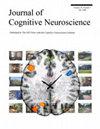人脑中的两个 "什么 "网络
IF 3.1
3区 医学
Q2 NEUROSCIENCES
引用次数: 0
摘要
昂格尔莱德和米什金在他们颇具影响力的工作中,依靠详细的解剖和消融研究,提出视觉信息是沿着两条不同的通路进行处理的:背侧的 "哪里 "通路主要负责空间视觉,而腹侧的 "什么 "通路则专门负责物体视觉。这种严格的分工面临着挑战,因为有令人信服的证据显示,在假定的 "哪里 "通路中存在着强大的形状和物体选择性。本文回顾了支持背侧通路存在形状选择性的证据。从不变性、任务依赖性和表征内容等方面对背侧和腹侧的物体表征进行比较研究,揭示了这两条通路的异同。两者都对图像变换表现出一定程度的耐受性,并受到任务的影响,但与腹侧通路相比,背侧通路的反应表现出更弱的耐受性和更强的任务调节性。此外,对其表征内容的研究也凸显了两条通路反应的差异,这表明它们对物体的不同特征非常敏感。总之,这些研究结果表明,人脑中存在两个处理物体形状的网络,一个在背侧,另一个在腹侧视觉皮层。这些研究为今后的研究奠定了基础,研究旨在揭示这两个 "什么 "网络在我们理解物体并与之互动的能力中所发挥的确切作用。本文章由计算机程序翻译,如有差异,请以英文原文为准。
Two “What” Networks in the Human Brain
Ungerleider and Mishkin, in their influential work that relied on detailed anatomical and ablation studies, suggested that visual information is processed along two distinct pathways: the dorsal “where” pathway, primarily responsible for spatial vision, and the ventral “what” pathway, dedicated to object vision. This strict division of labor has faced challenges in light of compelling evidence revealing robust shape and object selectivity within the putative “where” pathway. This article reviews evidence that supports the presence of shape selectivity in the dorsal pathway. A comparative examination of dorsal and ventral object representations in terms of invariance, task dependency, and representational content reveals similarities and differences between the two pathways. Both exhibit some level of tolerance to image transformations and are influenced by tasks, but responses in the dorsal pathway show weaker tolerance and stronger task modulations than those in the ventral pathway. Furthermore, an examination of their representational content highlights a divergence between the responses in the two pathways, suggesting that they are sensitive to distinct features of objects. Collectively, these findings suggest that two networks exist in the human brain for processing object shapes, one in the dorsal and another in the ventral visual cortex. These studies lay the foundation for future research aimed at revealing the precise roles the two “what” networks play in our ability to understand and interact with objects.
求助全文
通过发布文献求助,成功后即可免费获取论文全文。
去求助
来源期刊
CiteScore
5.30
自引率
3.10%
发文量
151
审稿时长
3-8 weeks
期刊介绍:
Journal of Cognitive Neuroscience investigates brain–behavior interaction and promotes lively interchange among the mind sciences.

 求助内容:
求助内容: 应助结果提醒方式:
应助结果提醒方式:


